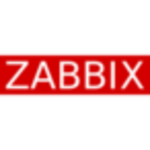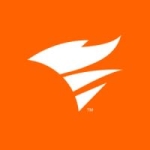In Amazon CloudWatch, I found their data analytics services most valuable. They are what we are looking for. We are utilizing Kinesis Data Firehose, Logstash Elastic, and CloudWatch Logs. There are many services that we are using, and in our case, we are using three.
An area for improvement that we want to see in Amazon CloudWatch is a more realistic monitoring. It's real-time data stream monitoring we are looking for. Our application is a huge application that will run on AWS. It has a lot of services that are running, so we want to monitor those services, e.g. message review and frontend application in ELB (Elastic Load Balancing).
It's not only monitoring that we want to do. We also want to visualize that monitoring data through dashboards. This is the main reason we plan to try Datadog because in Datadog, we can create a dashboard and we can visualize the log data through the dashboard.
We are not happy about the dashboards. In Amazon CloudWatch, they can fetch all the logs, but the service is not good at delivering the data into the dashboard, plus there's the lack of real data, e.g. in application performance monitoring. We find this product lacking and this is why we want to look for a new service that can cover our needs.
Additional features we would like to see in the future on this product include more API performance features, e.g. application performance monitoring. We also want live dashboards and well-designed workflows.
We also want integrative services, e.g. custom logs we can check, as we are not satisfied with what Amazon CloudWatch currently has. We are looking for more competency on these services: dashboards, real-time monitoring, real user monitoring, and application performance monitoring. We also have more and more mobile apps, so mobile app monitoring is also important.
These are the key areas that people are looking for, and what we'd like to see on this product in the future.
I've been using Amazon CloudWatch for over six years.
Amazon CloudWatch is scalable to some extent.
Technical support for this product is okay. They have a different support standard which they are maintaining. When you pay for premium support, you'll get your issue resolved within two hours. If it is standard support, it takes one to two days. The support you get depends on the type of support you paid for.
This solution is easy to set up. It's not complex. You just need to run the Amazon CloudWatch agent in all the services. Once we install the agent into our services, we'll be able to fetch the log regularly.
We're using Amazon CloudWatch. Our clients are using different monitoring services. Some are using Prometheus, while some are using Nagios, but in our platform overall, all the services are located in AWS only.
I have no advice for people looking into using Amazon CloudWatch, but in our case, all our services are running on the AWS platform, so initially we thought of using all their cloud-based native services to save on admin and infrastructure costs, including other connectivities. That was our plan initially, but now client requirements have been more demanding.
The client wants a real-time monitoring solution which is something we are unable to get from the product, so we are looking for a new solution like Datadog, or New Relic, or Prometheus.
My rating for Amazon CloudWatch is a seven out of ten.
I'm a consumer and I'm working in a company like Accenture. It's a service-based organization. It's a MNC (multinational corporation), so it's global and we have multiple clients. These multiple clients have different strategies and they want their applications to be set up in the Cloud. I'm the AWS architect, so I do the solutions and provide solutions for them, e.g. cost optimization, infrastructure optimization, etc.
What clients find most challenging thing in the Cloud is monitoring, so we are looking for a centralized monitoring solution where we can get everything in a single window, but we want a service that's similar to Amazon CloudWatch. We collect data and we need to analyze that log and analyze the metrics, so we create a refined monitoring data, then we publish it by using the Amazon QuickSight dashboard. There are three different services we have to use, so instead of using all these different services, we want to use only one service: a centralized monitoring service to meet all our needs. This is what we are looking to have in the future.




















